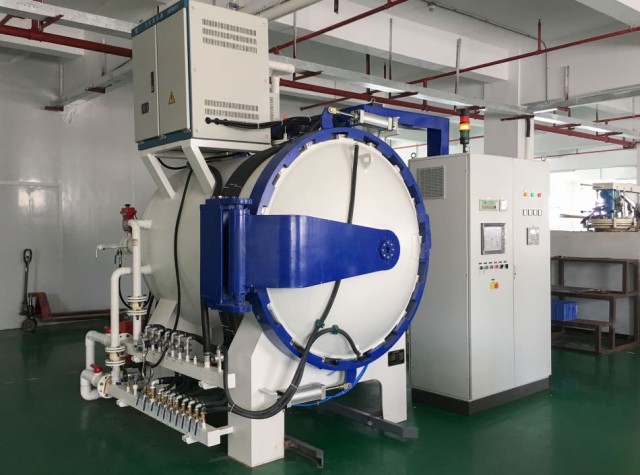Vacuum Furnace Types
Vacuum Brazing Furnace
The vacuum brazing furnace is a specialized piece of equipment designed for the precise joining of various metals and alloys in a controlled, vacuum environment. This process is particularly advantageous for materials that are sensitive to oxidation or require high-quality, clean joints. The vacuum environment eliminates the need for flux, which is commonly used in other brazing methods, thereby preventing contamination and ensuring a superior bond.
Key Materials Processed in Vacuum Brazing Furnaces
- Aluminum Alloys: Known for their lightweight and corrosion-resistant properties, aluminum alloys benefit from the clean environment provided by vacuum brazing.
- Stainless Steel: With its excellent strength and resistance to corrosion, stainless steel components are often joined using vacuum brazing to maintain these properties.
- Titanium Alloy: Due to its high strength-to-weight ratio and resistance to extreme temperatures, titanium alloys require a controlled environment like vacuum brazing to ensure strong, reliable joints.
- Cemented Carbide: Used in cutting tools and wear-resistant parts, cemented carbides are processed in vacuum brazing furnaces to achieve durable, high-quality joints.
- High-Temperature Alloys: These alloys, often used in aerospace and energy sectors, require precise temperature control and a clean environment, making vacuum brazing an ideal choice.
- Non-Ferrous Metals: Metals such as copper and its alloys are processed in vacuum brazing furnaces to achieve clean, strong joints without the risk of oxidation.
- Vacuum Tempering of Materials: Materials like high-speed steel, die steel, bearing steel, and stainless steel undergo vacuum tempering to enhance their mechanical properties and dimensional stability.
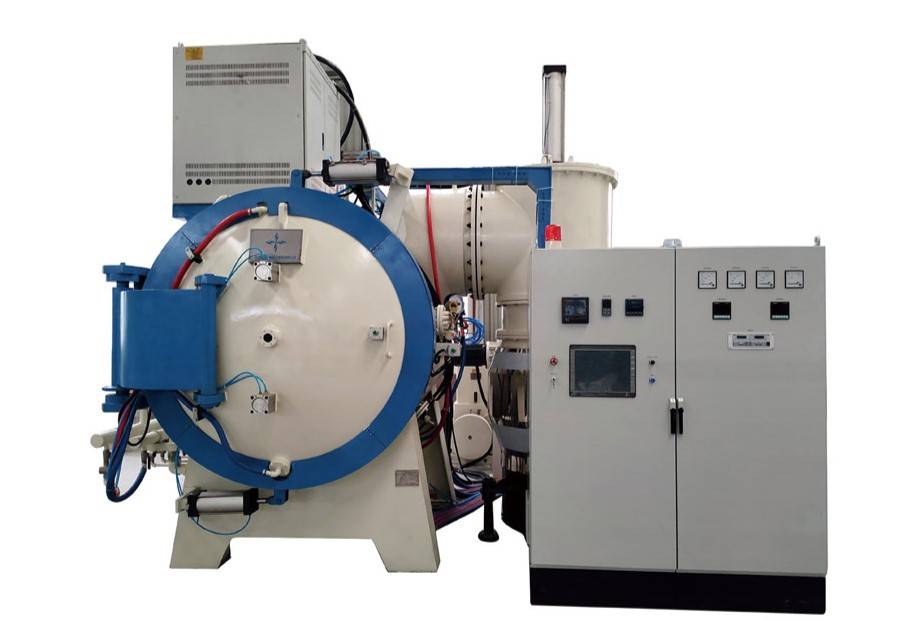
The Vacuum Brazing Process
-
Cleaning and Preparation: The first step involves thorough cleaning of the components to be joined. This ensures that any contaminants such as oil, grease, or oxides are removed, which could otherwise interfere with the brazing process. Common cleaning methods include ultrasonic cleaning, vapor degreasing, and chemical etching.
-
Assembly and Fixturing: After cleaning, the components are carefully assembled and fixtured to maintain proper alignment and spacing during the brazing process. Fixtures are typically made from materials with a low coefficient of thermal expansion and are non-reactive with the base metals or the brazing filler metal.
By following these meticulous steps, the vacuum brazing furnace ensures that the final product meets the stringent quality requirements of various industries, from aerospace to automotive and beyond.
Vacuum Quenching Furnace
Vacuum quenching furnaces are specialized pieces of equipment designed for the heat treatment of various high-precision parts, particularly those made from materials such as high-speed steel, tool steel, mold steel, and alloy structural steel. These furnaces are also adept at handling high-pressure gas quenching processes, ensuring that the materials undergo precise and controlled heat treatments.
One of the standout features of vacuum quenching furnaces is their ability to perform high-temperature brazing on stainless steel materials. This process ensures that the materials achieve the necessary mechanical properties and structural integrity. Additionally, these furnaces are instrumental in the solid solution treatment and sintering of powder materials, making them versatile tools in the realm of advanced material processing.
Vacuum quenching furnaces are not limited to traditional quenching methods. They incorporate advanced vacuum heat treatment technologies, such as vacuum high-pressure gas quenching, which offers a wide range of vacuum bright gas options for materials like stainless steel, alloy steel, and titanium alloy. This method ensures that the parts maintain their precision and integrity, with minimal deformation and a high degree of surface cleanliness.
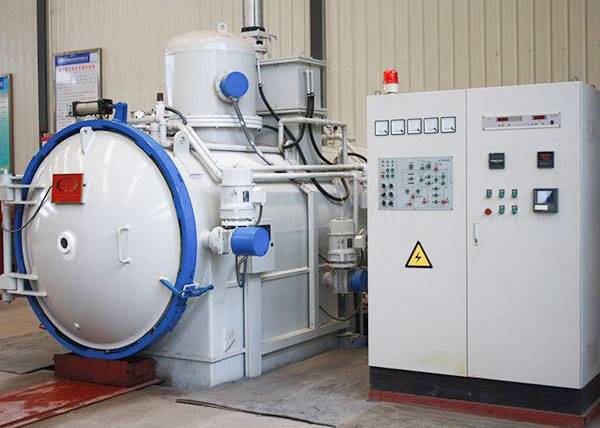
Moreover, the integration of modern control systems in vacuum quenching furnaces, such as KinTek software, has significantly enhanced their operational efficiency and automation levels. These systems provide realistic animation effects and personalized functional attributes, making the furnaces easier to monitor and control. This advanced technology ensures that the temperature is uniformly distributed, and the mechanical systems operate smoothly and reliably, with the ability to quickly adjust quenching transfer times.
In summary, vacuum quenching furnaces are indispensable in various industrial applications, offering precise and advanced heat treatment solutions for high-speed steel, mold steel, stainless steel, and other critical materials. Their ability to perform high-temperature brazing, solid solution treatment, and powder material sintering, combined with modern control systems, makes them a cornerstone in the field of material science and engineering.
Vacuum Sintering Furnace
Vacuum sintering furnaces are specialized equipment designed for the sintering of refractory alloys, such as tungsten and molybdenum, and their respective alloys, within a controlled environment of vacuum or hydrogen. This process is particularly advantageous for producing components that are intricate or delicate, which would be challenging to manufacture through conventional casting or machining methods.
Key Features and Benefits
- Design Flexibility: Vacuum sintering offers incredible design flexibility, making it ideal for creating complex geometries that are otherwise difficult to achieve.
- Quality and Consistency: The process yields parts with superior quality, free from seams, joints, or fillers, ensuring a bright and consistent finish.
- Efficiency: It is an efficient method that minimizes waste and ensures quick turnaround times, making it a preferred choice for high-volume production.
- Material Versatility: Suitable for a wide range of materials, including powdered metals, metal injection molding (MIM) components, and parts produced via 3D printing.
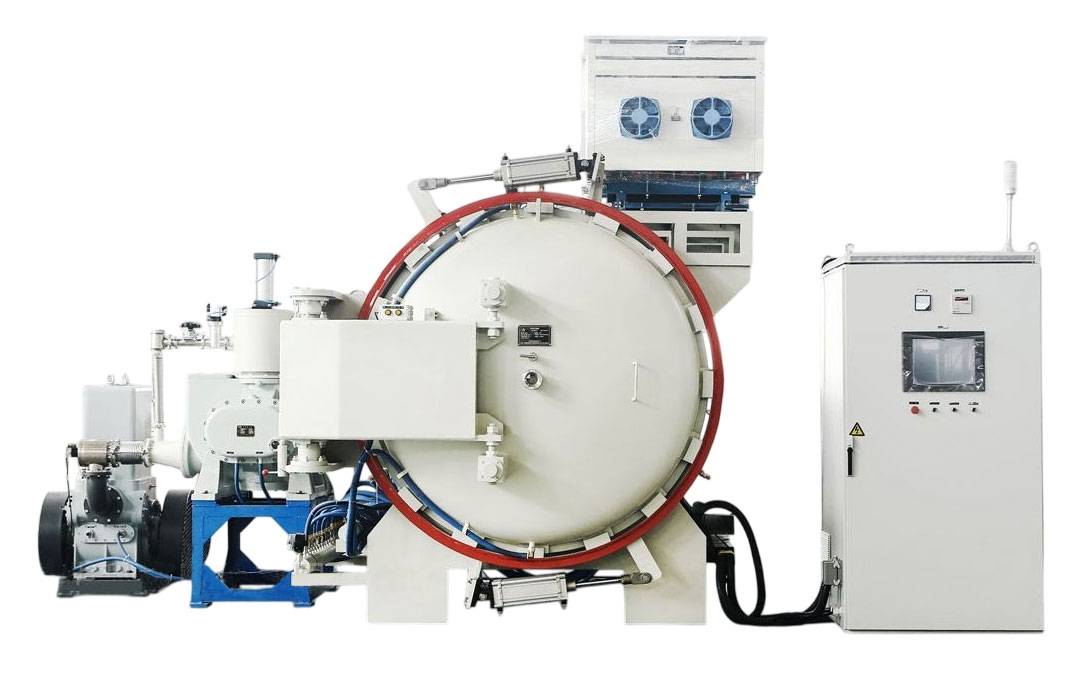
Process Overview
The sintering process begins with debinding, a critical step that prepares the material for consolidation. Under vacuum conditions, the powdered material is converted into a dense, solid form, affecting the microstructure's grain size, pore size, and grain boundary distribution. This directly influences the material's final properties, making vacuum sintering a crucial step in producing high-performance materials.
Applications
Vacuum sintering furnaces are indispensable in industries requiring high-precision components, such as semiconductor manufacturing and power rectifier parts. The ability to control the environment and process parameters ensures the production of parts with exacting specifications, meeting the stringent demands of modern industrial applications.
Vacuum Annealing Furnace
The Vacuum Annealing Furnace is specifically designed to prevent oxidation in various precision metal parts, making it an indispensable tool in industries such as stainless steel manufacturing. This furnace is particularly effective for deep-drawing parts, stainless steel bearings, cutting tools, self-tapping self-drilling components, and stainless steel dowels. The process involves creating a controlled vacuum environment, which is then filled with high-purity nitrogen or ammonia decomposition gas to protect the materials from oxidation and off-carbon effects.
During operation, the furnace is first evacuated to a predetermined vacuum level. This step is crucial as it removes any residual gases that could potentially react with the metal components, leading to oxidation or other undesirable chemical reactions. Once the desired vacuum level is achieved, the furnace is filled with protective gases, which not only prevent oxidation but also ensure uniform heating throughout the chamber. The use of agitating fans further enhances the temperature uniformity within the furnace, ensuring that all parts are annealed evenly.
The Vacuum Annealing Furnace is not limited to stainless steel applications; it is also widely used for non-oxidized bright annealing of mechanical parts, silicon steel sheets, copper materials, and wire materials. This versatility makes it a key piece of equipment in the production of high-quality, durable metal components across various industries.
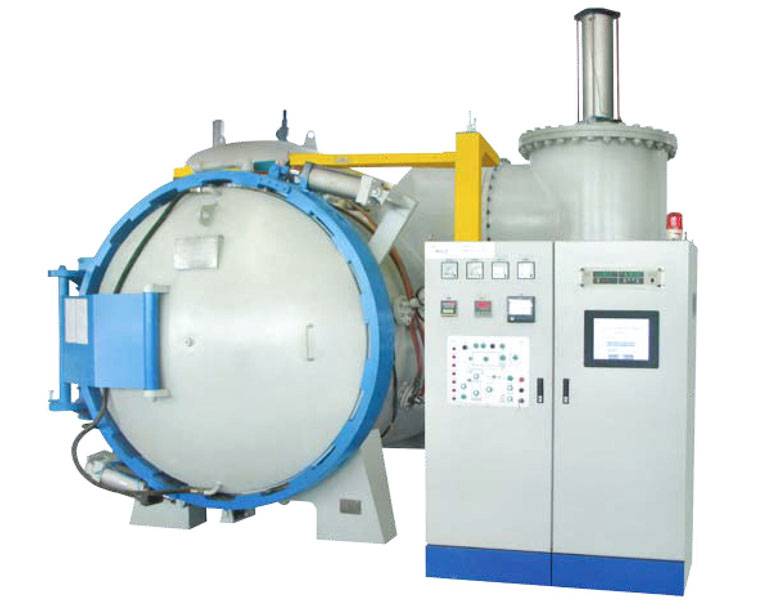
Vacuum Tempering Furnace
The vacuum tempering furnace is a specialized piece of equipment designed for the high-temperature tempering of various materials, including mold steel, high-temperature alloys, elastic alloys, copper alloys, and titanium alloys. This process is crucial for achieving the desired balance between hardness and ductility in these materials, which is essential for their performance in demanding applications.
Vacuum tempering involves the precise control of heating and rapid cooling, often referred to as quenching. This method creates a hardened steel that can withstand extreme conditions. Following the initial hardening, the material is gradually reheated to enhance its ductility, ensuring that it remains tough and resilient without becoming brittle. This dual process of hardening and tempering is particularly beneficial for materials like high-speed steels and alloy steels, which require a fine balance of properties to perform effectively in their intended roles.
The vacuum environment within the furnace plays a key role in ensuring that the tempering process is conducted without any contamination or oxidation, which could otherwise compromise the integrity of the material. This controlled environment allows for the precise alignment of metal grains, resulting in optimal hardness and durability. The robustness and flexibility of the vacuum tempering furnace make it a versatile solution for a wide range of applications, from creating blades and cutting tools to enhancing the performance of various industrial components.
Vacuum Oil Quenching Furnace
Vacuum oil quenching furnaces are specialized equipment designed for the heat treatment of a variety of high-performance steels, including mold steel, spring steel, stainless steel, bearing steel, and high-temperature alloy steel. This process is also applicable for annealing, ensuring that the materials undergo the necessary transformations without compromising their structural integrity.
One of the standout features of vacuum oil quenching is its cost-effectiveness. The quenching oil used in these furnaces is reusable, significantly reducing operational costs compared to other quenching methods. This reusability not only makes the process economically viable but also environmentally friendly by minimizing waste.
The vacuum oil quenching process involves cooling the heated workpieces in a controlled environment, typically using vacuum quenching oil. This method ensures that the parts achieve the desired hardness and mechanical properties without the risk of oxidation or contamination. The use of vacuum oil also allows for a more uniform cooling rate, which is crucial for preventing distortion and maintaining the dimensional accuracy of the components.
In addition to their economic benefits, vacuum oil quenching furnaces are known for their ability to handle large and complex workpieces with minimal deformation. This is particularly advantageous for industries that require high precision, such as aerospace and automotive manufacturing. The controlled atmosphere within the furnace, often supplemented with nitrogen, further enhances the cooling capacity of the oil, ensuring that the workpieces reach the required hardness under normal pressure conditions.
Moreover, the safety measures incorporated into vacuum oil quenching furnaces, such as nitrogen pressure regulation during the cooling process, not only protect the oil from excessive volatilization but also reduce the risk of fire hazards. This dual focus on safety and efficiency makes vacuum oil quenching furnaces a preferred choice for many industrial applications.
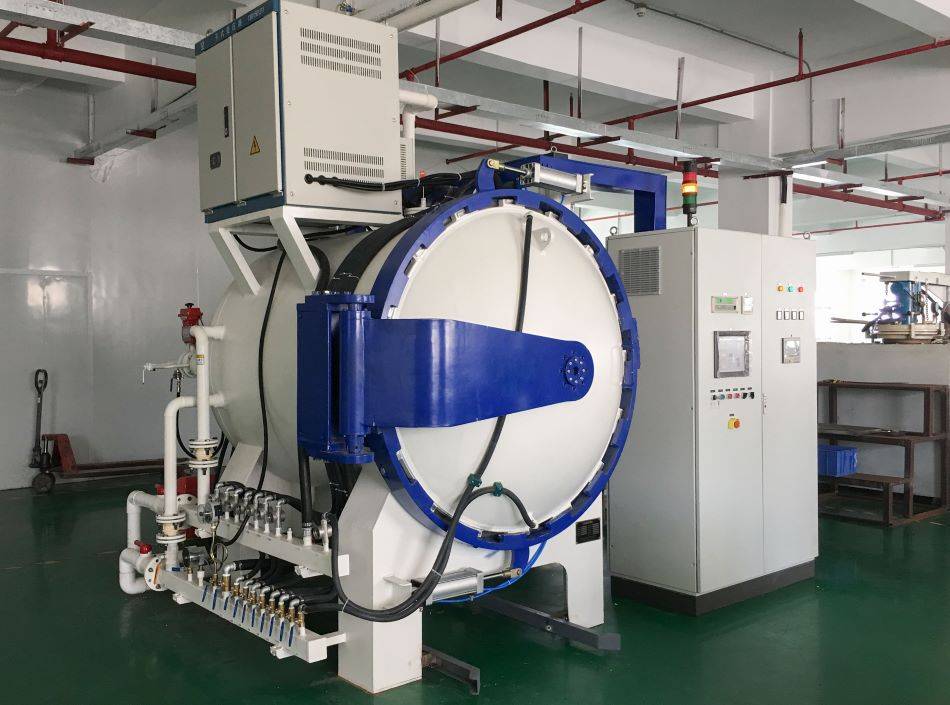
Vacuum Carburizing Furnace
Vacuum carburizing furnaces are specialized equipment used for a range of heat treatment processes, including vacuum carburizing, vacuum carbonitriding, and quenching. These processes are essential for enhancing the surface properties of materials such as high-alloy carburizing steel, structural steel, stainless steel, and mold steel.
Vacuum carburizing, a thermo-chemical treatment, involves heating steel parts to temperatures typically between 900-1000°C in a controlled, low-pressure environment. This method enriches the surface layer with carbon, significantly increasing its hardness and abrasion resistance while preserving the malleable core of the material. Unlike traditional atmospheric carburizing, vacuum carburizing offers several advantages, including the use of environmentally friendly carrier gases like acetylene (C2H2) and the absence of CO2 emissions.
The process of vacuum carburizing began in the United States in the 1950s, with significant developments and patents emerging in the 1960s and 1970s. Today, various types of vacuum carburizing furnaces are widely employed in industrial production, particularly for applications involving gears and other critical components requiring enhanced surface properties.
Related Products
- Vacuum Heat Treat Sintering Brazing Furnace
- Vacuum Hot Press Furnace Machine Heated Vacuum Press
- Vacuum Arc Induction Melting Furnace
- Vacuum Heat Treat and Pressure Sintering Furnace for High Temperature Applications
- Vacuum Hot Press Furnace Heated Vacuum Press Machine Tube Furnace
Related Articles
- Comprehensive Guide to Vacuum Hot Press Furnace Application
- Vacuum Induction Furnace Fault Inspection: Essential Procedures and Solutions
- Vacuum Melting Furnace: A Comprehensive Guide to Vacuum Induction Melting
- Materials Science with the Lab Vacuum Furnace
- Mastering Vacuum Furnace Brazing: Techniques, Applications, and Advantages
